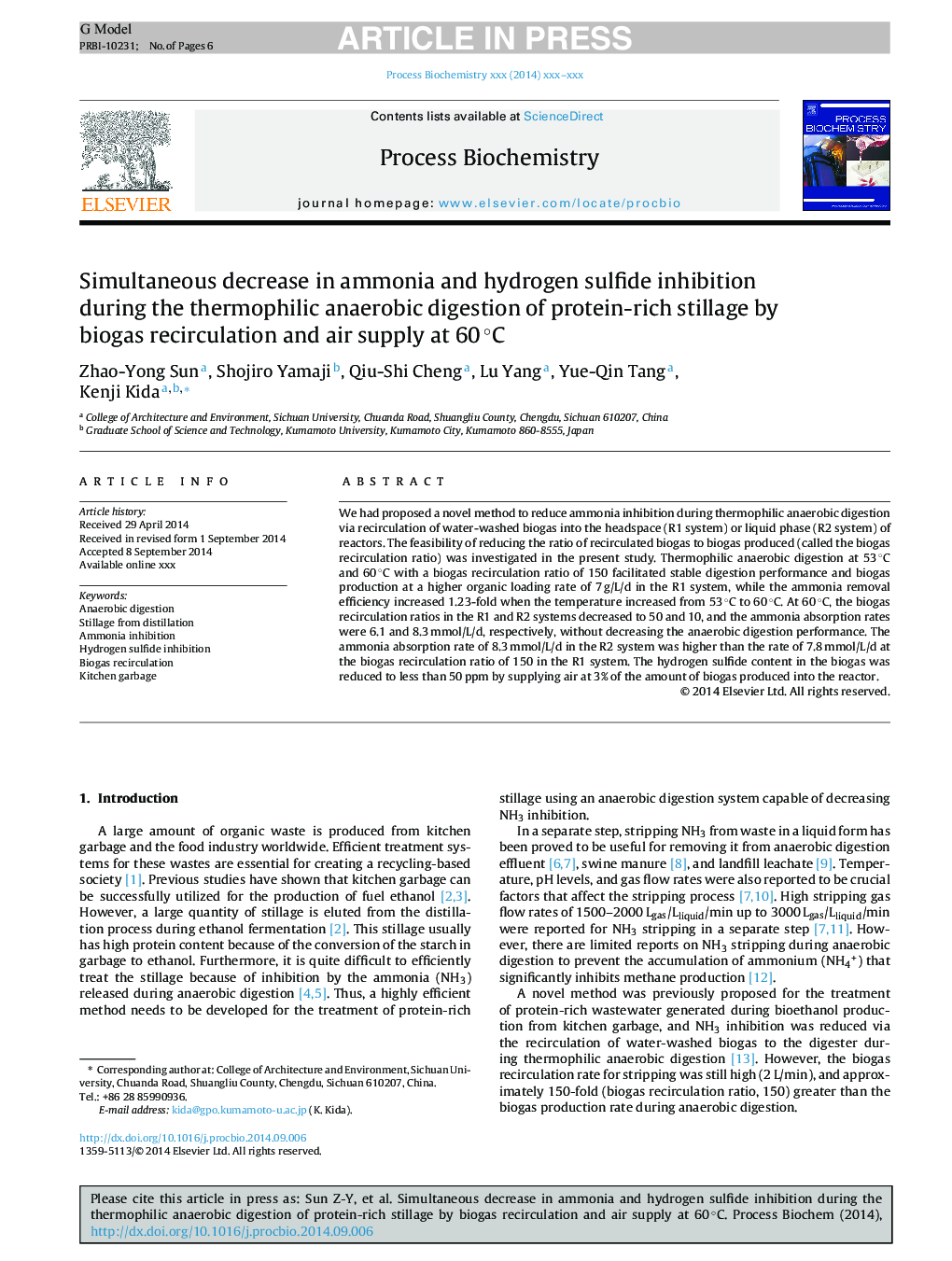| Article ID | Journal | Published Year | Pages | File Type |
|---|---|---|---|---|
| 10235310 | Process Biochemistry | 2014 | 6 Pages |
Abstract
We had proposed a novel method to reduce ammonia inhibition during thermophilic anaerobic digestion via recirculation of water-washed biogas into the headspace (R1 system) or liquid phase (R2 system) of reactors. The feasibility of reducing the ratio of recirculated biogas to biogas produced (called the biogas recirculation ratio) was investigated in the present study. Thermophilic anaerobic digestion at 53 °C and 60 °C with a biogas recirculation ratio of 150 facilitated stable digestion performance and biogas production at a higher organic loading rate of 7 g/L/d in the R1 system, while the ammonia removal efficiency increased 1.23-fold when the temperature increased from 53 °C to 60 °C. At 60 °C, the biogas recirculation ratios in the R1 and R2 systems decreased to 50 and 10, and the ammonia absorption rates were 6.1 and 8.3 mmol/L/d, respectively, without decreasing the anaerobic digestion performance. The ammonia absorption rate of 8.3 mmol/L/d in the R2 system was higher than the rate of 7.8 mmol/L/d at the biogas recirculation ratio of 150 in the R1 system. The hydrogen sulfide content in the biogas was reduced to less than 50 ppm by supplying air at 3% of the amount of biogas produced into the reactor.
Related Topics
Physical Sciences and Engineering
Chemical Engineering
Bioengineering
Authors
Zhao-Yong Sun, Shojiro Yamaji, Qiu-Shi Cheng, Lu Yang, Yue-Qin Tang, Kenji Kida,
